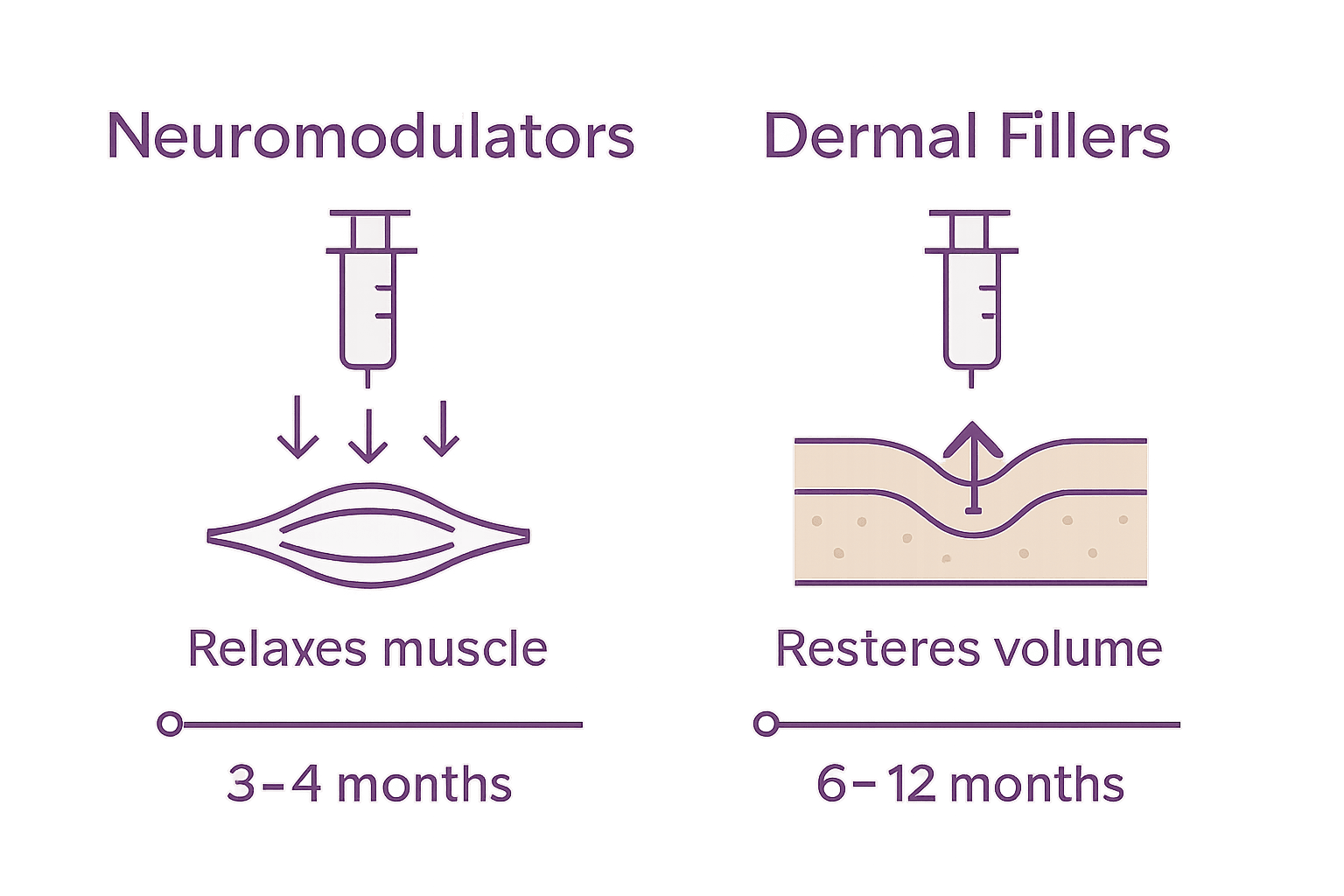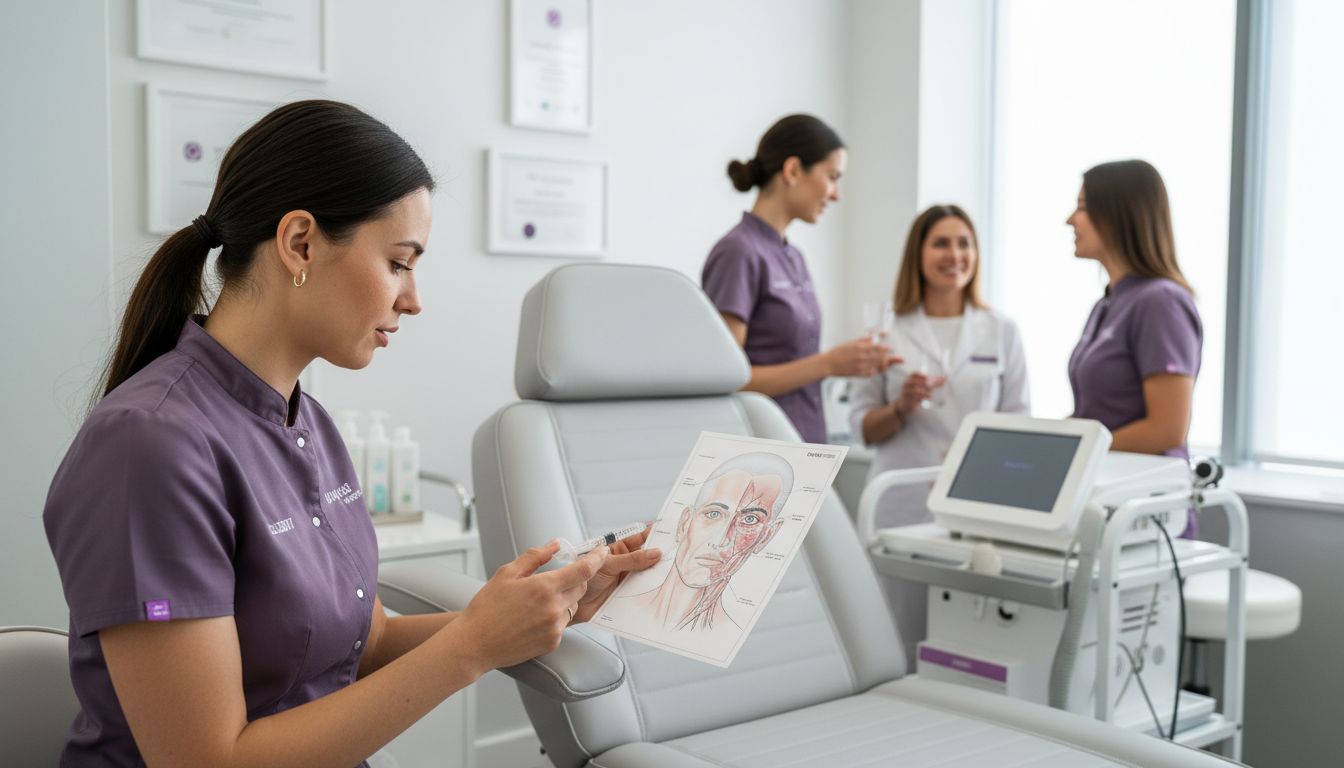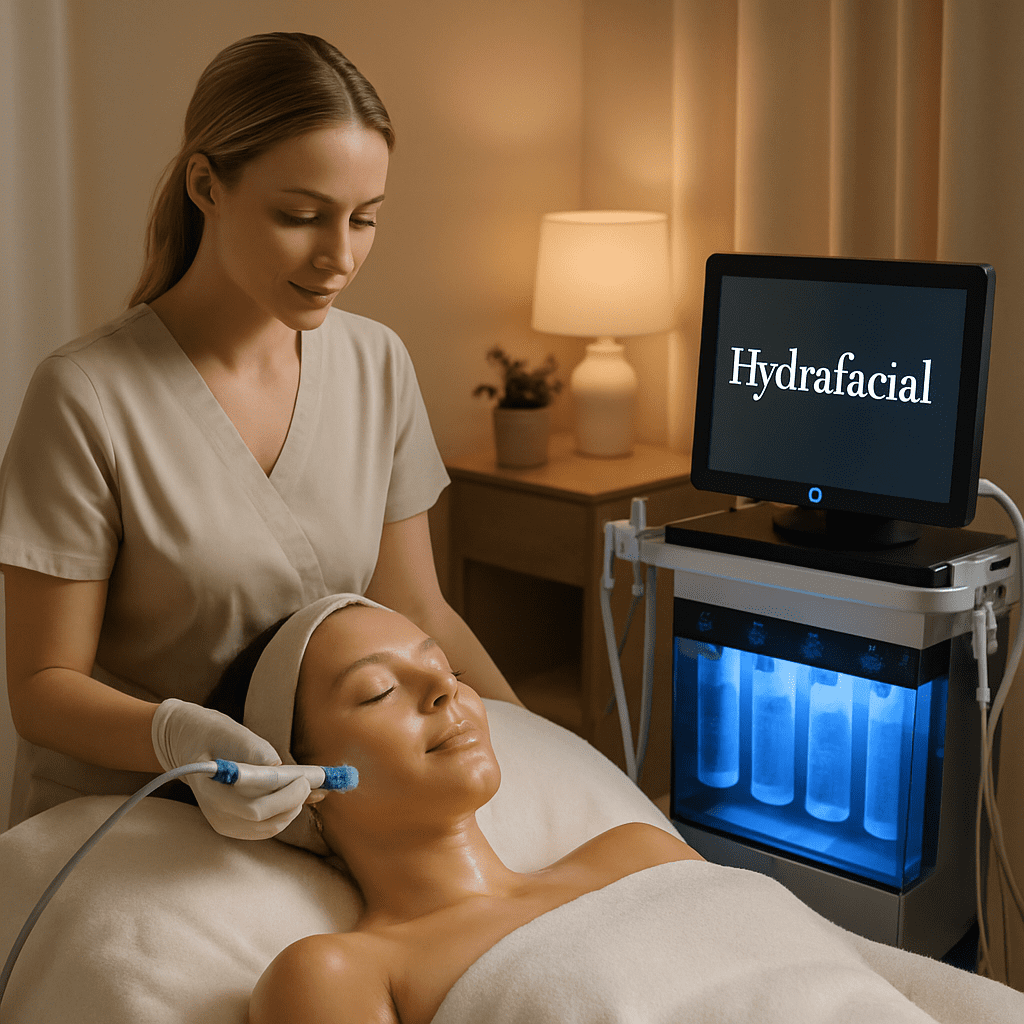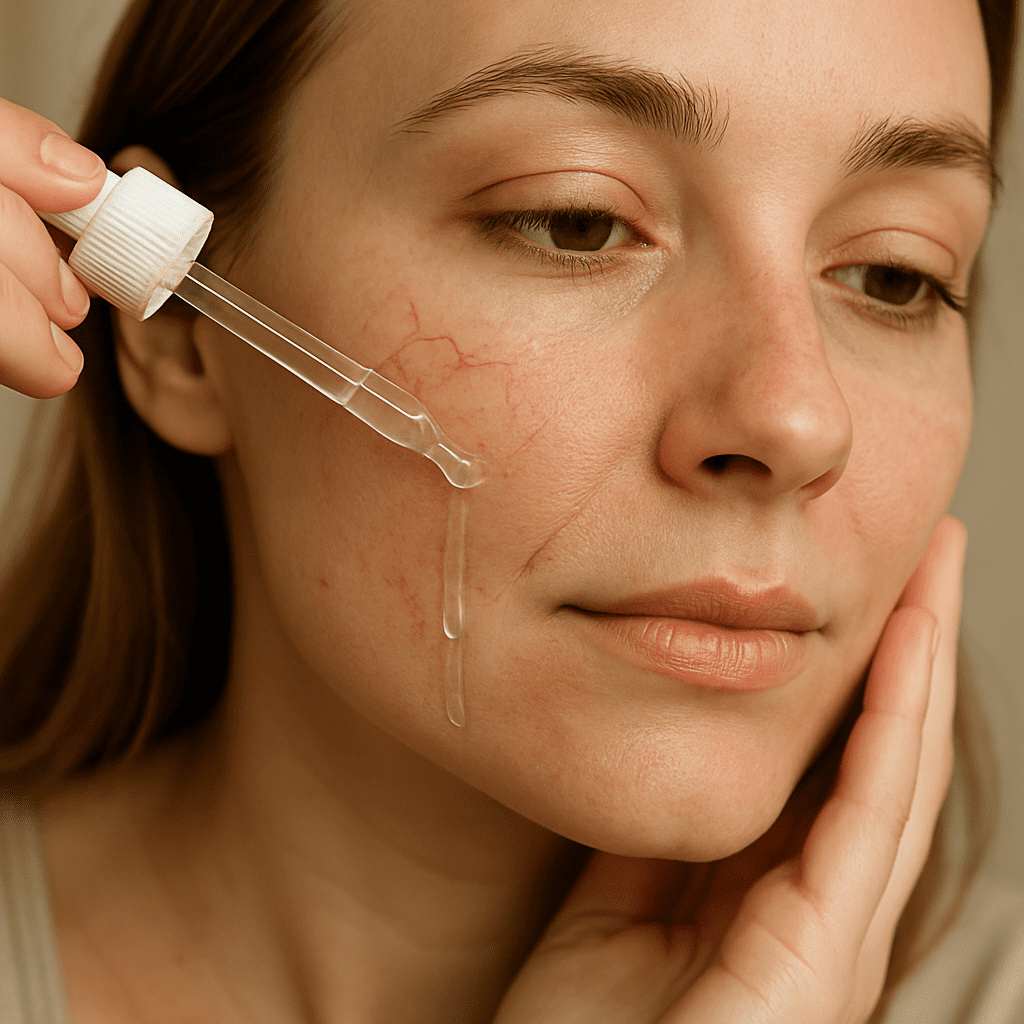More than 7 million injectable procedures are performed each year in the US alone, showing just how popular these treatments have become for non-surgical facial enhancement. People choose injectables to smooth wrinkles, restore youthful contours, and target signs of aging without extensive recovery time. Understanding the different types of cosmetic injectables means you can make informed choices and achieve natural, personalized results that fit your aesthetic goals.
Table of Contents
- Defining Injectables In Medical Aesthetics
- Common Types Of Cosmetic Injectables
- How Injectable Treatments Work
- Benefits And Expected Outcomes
- Risks, Safety, And Aftercare Guidelines
Key Takeaways
| Point | Details |
|---|---|
| Injectables Overview | Cosmetic injectables are minimally invasive treatments used for facial aesthetic improvement, including wrinkle reduction and volume restoration. |
| Types of Injectables | Main categories include neuromodulators (e.g., Botox) to relax muscles and dermal fillers (e.g., hyaluronic acid) to restore volume. |
| Mechanism of Action | Neuromodulators block nerve signals to reduce muscle movement, while dermal fillers enhance volume and stimulate collagen production. |
| Safety and Aftercare | Injectable procedures should only be performed by qualified professionals, and proper aftercare is essential for optimal results. |
Defining Injectables in Medical Aesthetics
Injectables represent a revolutionary approach to non-surgical cosmetic treatments that deliver targeted improvements to skin and facial aesthetics. According to Yale Medicine, these treatments are delivered under the skin using small needles or microcannulas to provide strategic lift, volume enhancement, and muscle relaxation.
At their core, cosmetic injectables are minimally invasive procedures designed to address multiple aesthetic concerns without extensive surgical intervention. University of Rochester Medical Center highlights that these treatments can effectively:
- Reduce visible wrinkles
- Add facial volume
- Lift sagging skin
- Treat specific skin conditions like neck fat
The two primary categories of injectables include neuromodulators (like Botox) and dermal fillers. Neuromodulators work by temporarily relaxing muscle movements to smooth dynamic wrinkles, while dermal fillers restore lost volume and provide structural support to facial tissues. These treatments offer remarkable flexibility, with results that can last anywhere from several months to multiple years, depending on the specific injectable used and individual patient characteristics.
Understanding the nuanced differences between injectable types is crucial for anyone considering aesthetic enhancements. For a comprehensive exploration of specific injectable options, check out our guide on cosmetic injectables that breaks down each treatment in detail.
Common Types of Cosmetic Injectables
Cosmetic injectables represent a diverse range of treatments designed to address various aesthetic concerns. According to the American Society of Plastic Surgeons, the most prevalent categories include neuromodulator injections and soft tissue fillers, each serving unique purposes in facial rejuvenation and enhancement.
Neuromodulator Injectables
Neuromodulators are specialized treatments that temporarily relax facial muscles to reduce the appearance of dynamic wrinkles. Common types include:
- Botox: The most recognized neuromodulator
- Dysport: Another muscle-relaxing injectable
- Xeomin: A purified neurotoxin treatment
- Jeuveau: A newer generation muscle relaxant
These injectables work by blocking nerve signals to specific facial muscles, smoothing out wrinkles caused by repetitive movements like smiling, frowning, or squinting.
Dermal Fillers
Cosmetic Surgery Organization highlights that dermal fillers are crucial for restoring facial volume and addressing age-related volume loss. The primary types of dermal fillers include:
- Hyaluronic Acid Fillers: Juvéderm, Restylane
- Calcium Hydroxylapatite Fillers: Radiesse
- Poly-L-Lactic Acid Fillers: Sculptra
Each filler type offers unique properties, targeting specific concerns like deep wrinkles, facial contours, and volume restoration.
 Our comprehensive guide on types of cosmetic injectables provides more in-depth information about selecting the right injectable for your aesthetic goals.
Our comprehensive guide on types of cosmetic injectables provides more in-depth information about selecting the right injectable for your aesthetic goals.
Here’s a comparison of the main types of cosmetic injectables:

| Type of Injectable | Key Purpose | Common Brands | Typical Duration |
|---|---|---|---|
| Neuromodulators | Smooth dynamic wrinkles Relax facial muscles |
Botox Dysport Xeomin Jeuveau |
3-6 months |
| Hyaluronic Acid Fillers | Restore facial volume Smooth static lines |
Juvéderm Restylane |
6-18 months |
| Calcium Hydroxylapatite Fillers | Deep wrinkle correction Facial contouring |
Radiesse | 12-18 months |
| Poly-L-Lactic Acid Fillers | Collagen stimulation Gradual volume restoration |
Sculptra | 2+ years |
How Injectable Treatments Work
Injectable treatments function through sophisticated mechanisms designed to address specific aesthetic concerns at the cellular and muscular levels. PubMed Research reveals that these treatments primarily work by interacting with the body’s nerve signals and tissue structures to create visible improvements in skin appearance and facial contours.
Neuromodulator Mechanism
Botulinum toxin injectables operate by strategically blocking nerve impulses to targeted facial muscles. According to the American Board of Cosmetic Surgery, these treatments cause muscle relaxation, which results in:
- Softening of dynamic facial wrinkles
- Reduced muscle tension
- Smoother facial expressions
- Prevention of further wrinkle development
When injected, neuromodulators like Botox temporarily interrupt the communication between nerves and muscles, causing controlled muscle relaxation. This process prevents repetitive muscle contractions that typically cause wrinkles, effectively “pausing” the aging process in treated areas.
Dermal Filler Mechanism
Dermal fillers work through a different approach, focusing on volume restoration and structural support. These injectables typically contain substances like hyaluronic acid, which:
- Attract and retain moisture
- Provide immediate volume enhancement
- Stimulate natural collagen production
- Smooth out static wrinkles and fine lines
By introducing these supportive substances beneath the skin, dermal fillers essentially “plump” targeted areas, restoring lost volume and creating a more youthful appearance.
VIDEO:video_content] For a deeper understanding of how these treatments can be personalized, explore our [guide on injectable treatments.
Benefits and Expected Outcomes
Cosmetic injectables offer a transformative approach to aesthetic enhancement, providing targeted solutions for multiple age-related concerns. University of Rochester Medical Center highlights the comprehensive range of improvements these treatments can deliver, from subtle refinements to significant facial rejuvenation.
Aesthetic Improvements
The primary benefits of injectable treatments include:
- Facial Volume Restoration: Rebuilding lost volume in cheeks and facial contours
- Wrinkle Reduction: Smoothing dynamic and static facial lines
- Facial Symmetry: Enhancing and balancing facial features
- Non-Surgical Intervention: Minimal downtime and recovery compared to surgical alternatives
According to Cosmetic Surgery Organization, these treatments provide a safe and effective strategy for addressing early signs of aging, offering clients a more youthful and refreshed appearance without invasive procedures.
Targeted Treatment Areas
Injectables can address specific aesthetic concerns across multiple facial regions:
- Lips: Creating fuller, more defined lip contours
- Under-Eye Area: Reducing dark circles and hollowness
- Cheeks: Lifting and enhancing facial structure
- Forehead and Glabellar Lines: Smoothing dynamic wrinkles
Unlike traditional surgical interventions, these treatments offer flexible results with gradual and natural-looking improvements. Most injectable treatments provide outcomes lasting from several months to two years, depending on the specific product and individual metabolism. For personalized insights into your potential results, our comprehensive injectable guide can help you understand what to expect from your treatment.
Risks, Safety, and Aftercare Guidelines
Safety is paramount in any cosmetic injectable procedure. The Aesthetic Society emphasizes that these treatments should only be performed by trained specialists who understand the nuanced risks and can ensure patient safety through comprehensive medical screening and precise technique.
Potential Risks and Complications
While injectable treatments are generally considered safe, PubMed Research highlights critical potential complications that patients must understand:
- Vascular Occlusion: Potential blockage of blood vessels
- Tissue Necrosis: Rare but serious tissue damage
- Vision Complications: Extremely rare risk of vision-related issues
- Infection: Potential bacterial introduction at injection site
Pre-Treatment Considerations
Before undergoing any injectable treatment, patients should:
- Disclose complete medical history
- Discuss current medications
- Understand potential allergic reactions
- Verify practitioner’s professional credentials
- Undergo comprehensive initial consultation
Aftercare Best Practices
Following injectable treatments, recommended aftercare includes:
- Avoid intense physical activity for 24-48 hours
- Minimize direct sun exposure
- Stay hydrated
- Use recommended cold compresses for swelling
- Avoid touching or massaging treatment areas
Recovery experiences vary, but most patients can resume normal activities immediately. For personalized aftercare instructions tailored to your specific treatment, our comprehensive injectable guide provides detailed insights into post-procedure care.
Discover How Injectables Can Transform Your Look Today
If you have been learning about the different types of injectables used in aesthetics and wondering how to safely and effectively reduce wrinkles or restore facial volume you are not alone. Many people face challenges like sagging skin or visible lines that affect confidence and comfort in their own skin. Treatments such as neuromodulators and dermal fillers offer targeted solutions to smooth dynamic wrinkles or replace lost volume without surgery. Understanding these options can be overwhelming but knowing the right injectable and care can deliver natural looking results that last.

Ready to take control of your skin’s future and achieve a youthful refreshed appearance now? Visit Simcoe Cosmetic Clinic to explore our range of expert injectable services. Learn more in our Uncategorized Archives – SIMCOE COSMETIC CLINIC for detailed insights and stay updated with the Latest Medical Articles. Our team is here to guide you through a personalized consultation ensuring safe treatments that align with your aesthetic goals. Make the change today and experience the lasting benefits of professional injectables.
Frequently Asked Questions
What are cosmetic injectables?
Cosmetic injectables are minimally invasive treatments designed to enhance skin and facial aesthetics by addressing concerns like wrinkles, volume loss, and sagging skin through the use of neuromodulators and dermal fillers.
How do neuromodulators and dermal fillers differ in their functions?
Neuromodulators, such as Botox, temporarily relax facial muscles to reduce dynamic wrinkles, while dermal fillers like hyaluronic acid restore volume and smooth out static wrinkles by providing structural support to facial tissues.
What results can I expect from injectable treatments, and how long do they last?
Injectable treatments can offer improvements such as smoother wrinkles, enhanced facial volume, and more balanced features. Results typically last from several months to two years, depending on the specific type of injectable used and individual patient characteristics.
Are there any risks associated with cosmetic injectables?
While cosmetic injectables are generally safe, potential risks include vascular occlusion, tissue necrosis, vision complications, and infection. It is essential to have these treatments performed by trained specialists to minimize potential complications.
Recommended
- Cosmetic Injections: Complete Guide for Skin Rejuvenation – SIMCOE COSMETIC CLINIC
- 7 Essential Types of Cosmetic Injectables Explained Clearly – SIMCOE COSMETIC CLINIC
- Dermal Fillers Explained: Benefits, Types, Safety – SIMCOE COSMETIC CLINIC
- Difference Between Fillers and Botox Explained – SIMCOE COSMETIC CLINIC
- How Diesel Injectors Work: Essential Guide for Technicians 2025 – My WordPress





